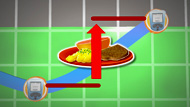Pain Medicines for Diabetic Neuropathy
Topic Overview
Medicines used to relieve pain caused by damage from diabetes to the nerves that supply sensation and touch (peripheral neuropathy) may include:
- Tricyclic antidepressants such as amitriptyline, desipramine, and imipramine.
- Duloxetine (Cymbalta), which is an antidepressant. It may cause dry mouth, nausea, constipation, diarrhea, and sometimes dizziness and hot flashes.
- Anticonvulsants such as carbamazepine, gabapentin, and pregabalin. Anticonvulsants are also frequently prescribed to reduce pain linked with diabetic neuropathy.
- Lidocaine or mexiletine. Lidocaine comes as a patch that you can put on your skin where the pain is the worst. Mexiletine is an oral medicine similar to lidocaine. Both medicines are used to relieve pain caused by neuropathy.
- Capsaicin cream. Capsaicin is a substance contained in cayenne peppers. Although it may not provide complete pain relief, it may help relieve minor pain in some people. Capsaicin cream is applied directly to the skin over the painful area.
- Nonprescription pain relievers. These include acetaminophen and nonsteroidal anti-inflammatory drugs (NSAIDs), such as aspirin, ibuprofen, or naproxen. Although they may provide some temporary pain relief, they are not effective for long-term treatment of severe pain. Note: People with diabetes need to be especially careful when taking NSAIDs because these medicines may upset kidney function. Be safe with medicines. Read and follow all instructions on the label.
- Opioid pain relievers such as oxycodone, which may reduce moderate to severe pain from diabetic neuropathy. But opioids are usually only given to people who do not have a personal or family history of addiction. Opioids may also cause side effects that could make symptoms of autonomic neuropathy worse. So opioids are not often the first type of medicine tried for symptoms of diabetic neuropathy.
If you begin taking an antidepressant or an anticonvulsant medicine for pain, it may take several weeks to see whether it is working. The dose may have to be adjusted more than once to find the best balance between pain relief and medicine side effects.
No matter what you or your doctor try, you may not be pain-free. Your doctor may recommend using two or more drugs together to control your pain best. Be clear with your doctor about what is working and what is not. Together you and your doctor can find the best combination of medicine and other treatments to help you the most.
The U.S. Food and Drug Administration (FDA) has issued an advisory on antidepressant medicines and the risk of suicide. Talk to your doctor about these possible side effects and the warning signs of suicide.
Related Information
Credits
ByHealthwise Staff
Primary Medical Reviewer E. Gregory Thompson, MD - Internal Medicine
Adam Husney, MD - Family Medicine
Kathleen Romito, MD - Family Medicine
Specialist Medical Reviewer Karin M. Lindholm, DO - Neurology
Current as ofDecember 7, 2017
- Top of Page
Next Section:
Related Information
Previous Section:
Topic Overview- Top of Page
Next Section:
Credits
Previous Section:
Related Information- Top of Page
Current as of: December 7, 2017




